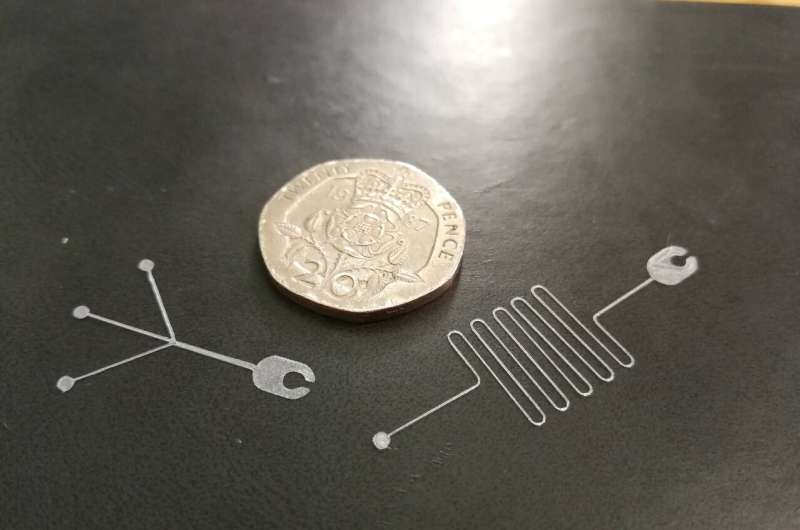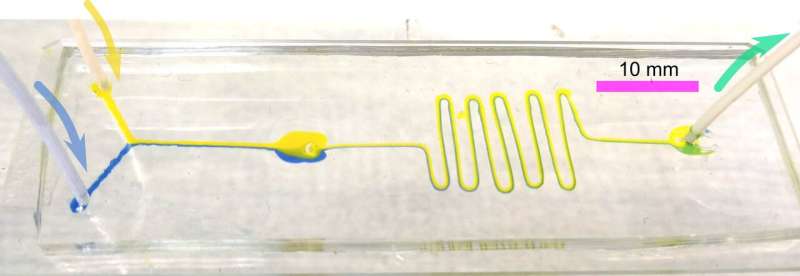Pioneering technique paves way for fast and cheap fabrication of rapid medical diagnostic tools

New technology developed by the University of Bristol has the potential to accelerate uptake and development of on-chip diagnostic techniques in parts of the world where rapid diagnoses are desperately needed to improve public health, mortality and morbidity.
Microfluidic devices underpin lab-on-a-chip (LOC) technologies which are developed to provide the rapid diagnoses at that are needed at point of care (POC) for the swift and effective treatment of many diseases.
Researchers at Bristol have developed a fast, reliable and cost-effective alternative for producing the soft-lithographic moulds used for fabricating microfluidic devices, published in the journal PLOS ONE. This discovery means fabrication of microfluidic devices (with channel dimensions ~width of a human hair) is now both accessible and affordable using simple, low-cost 3-D-printing techniques and the open-source resources developed by the team.
"Previously, techniques for producing the soft-lithographic scaffolds/moulds (microfluidic channel patterns) were time-consuming and extremely expensive, while other low-cost alternatives were prone to unfavourable properties. This development could put LOC prototyping into the hands of researchers and clinicians who know the challenges best, in particular those in resource-limited settings, where rapid diagnostics may often have the greatest impact," said lead author of the study, Dr. Robert Hughes.

"This technique is so simple, quick & cheap that devices can be fabricated using only everyday domestic or educational appliances and at a negligible cost (~0.05% of cost of materials for a single microfluidic device). This means researchers and clinicians could use our technique and resources to help fabricate rapid medical diagnostic tools, quickly and cheaply, with minimal additional expertise or resources required," said co-author, Mr Harry Felton.
"The simplicity and minimal cost of this technique, as well as the playful click-and-connect approach developed, also makes it suitable for hobbyists and educational use, to teach about microfluidics and the applications of lab-on-a-chip technology," said co-author Ms Andrea Diaz Gaxiola.
"It is our hope that this will democratise microfluidics and lab-on-a-chip technology, help to advance the development of point-of-care diagnostics, and inspire the next generation of researchers and clinicians in the field," said Dr. Hughes.

The next step for the team is to identify potential collaborators in both research and education to help demonstrate the impact this technology could have in both settings by developing and supporting outreach activities and applications for on-chip diagnostic testing.
More information: Negligible-cost microfluidic device fabrication using 3D-printed interconnecting channel scaffolds, Felton, H., Hughes, R., & Diaz-Gaxiola, A., in PLOS ONE. DOI: 10.1371/journal.pone.0245206
Journal information: PLoS ONE
Provided by University of Bristol



















